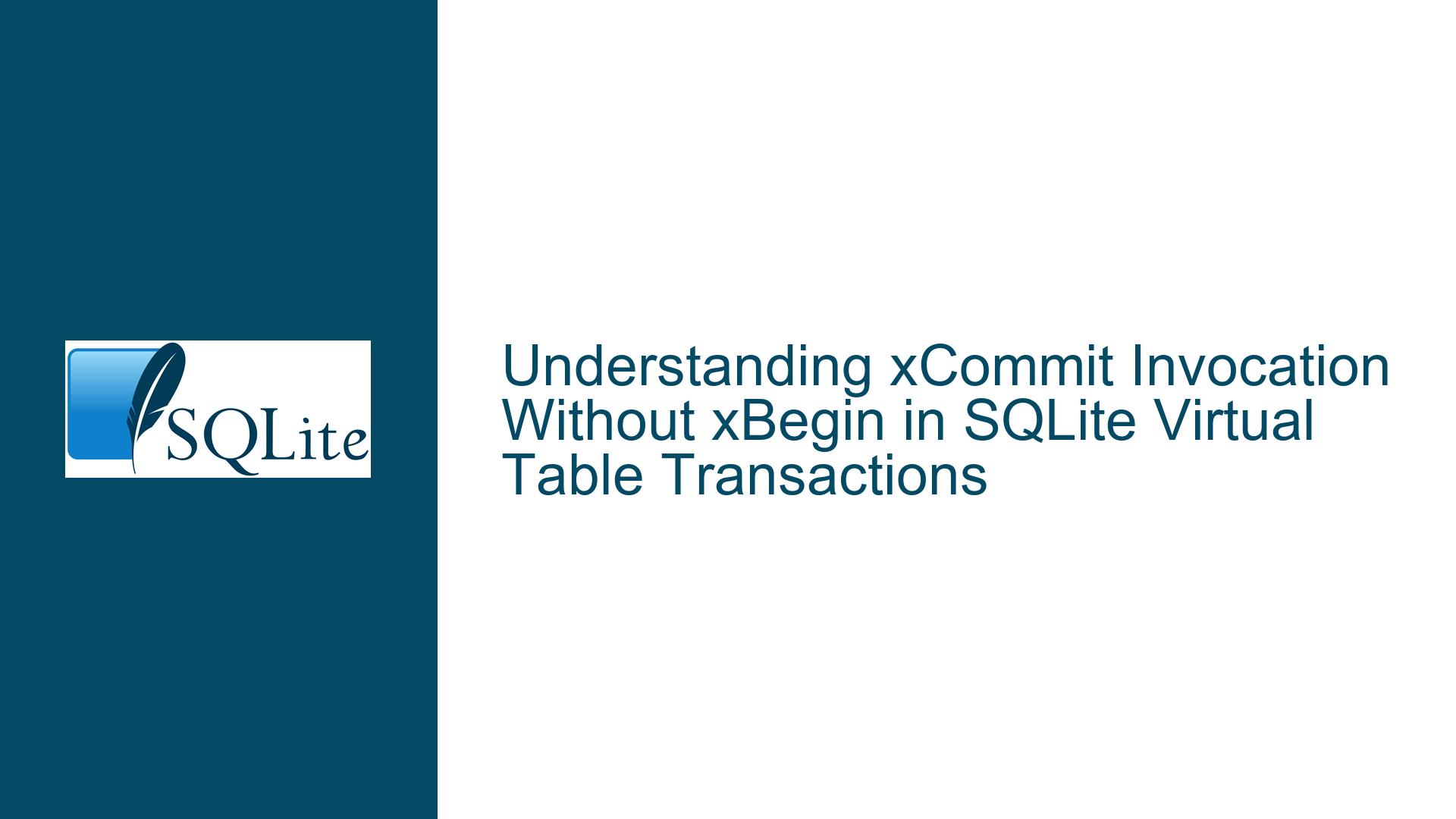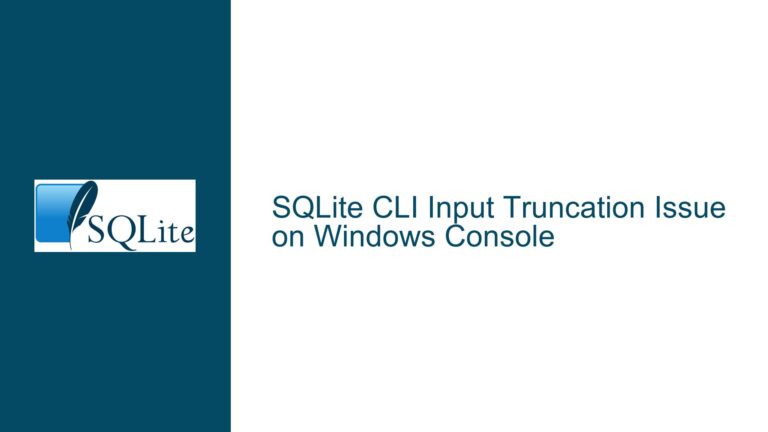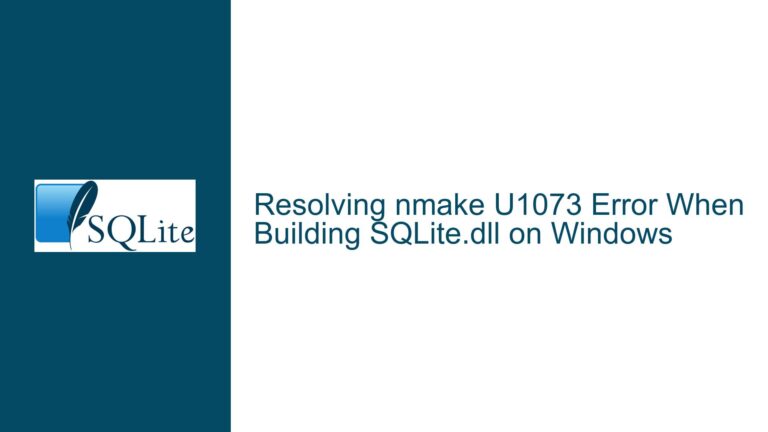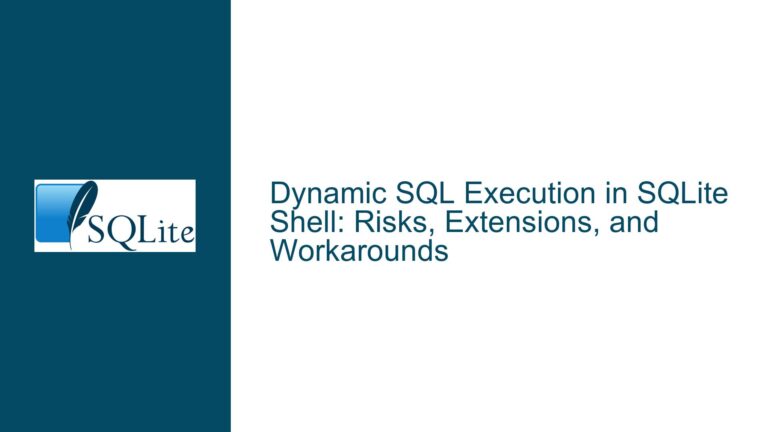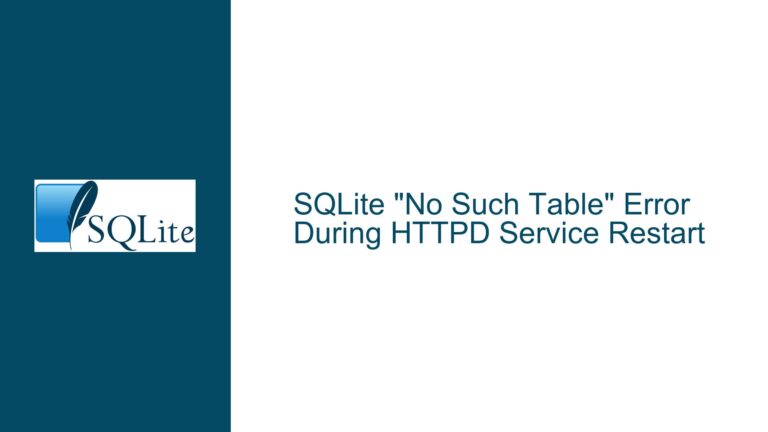xCommit Invocation Without xBegin in SQLite Virtual Table Transactions
Issue Overview: xCommit Triggered After xCreate Without Preceding xBegin in Virtual Table Operations
The core issue revolves around SQLite’s interaction with virtual table implementations when handling transactional operations, specifically the unexpected invocation of the xCommit method without a prior xCommit method. This contradicts the explicit documentation stating that xCommit should only be called after xBegin and xSync during transactions. The problem manifests when a virtual table is created using the xCreate method, followed by xSync and xCommit without any preceding xBegin call. This behavior was observed in SQLite version 3.38.2 and raises questions about whether this is a documentation oversight or an unintended deviation in SQLite’s internal transaction management logic.
Virtual tables in SQLite are extensions that allow developers to define custom data sources accessible via standard SQL queries. These tables rely on a set of predefined methods (e.g., xCreate, xConnect, xSync, xCommit) to manage their lifecycle and transactional integrity. The xCreate method is invoked when a virtual table is first instantiated, while xBegin and xCommit are part of the transactional control flow. The documentation asserts that xCommit should only follow xBegin and xSync, but empirical observations reveal that under certain conditions, such as during table creation, this sequence is not strictly adhered to. This discrepancy can lead to confusion for developers implementing virtual tables, especially when relying on the documented behavior to enforce transactional guarantees.
Further complicating the issue are ancillary observations about potential documentation inaccuracies and transactional safety. A typographical error in the documentation referencing (*Rename) instead of (*xRename) was noted, which could mislead developers during implementation. Additionally, concerns were raised about the soundness of allowing ROLLBACK or ROLLBACK TO operations when a virtual table lacks support for xRollback or xRollbackTo methods. These issues collectively highlight potential gaps in SQLite’s documentation and transactional enforcement mechanisms, particularly when dealing with virtual tables that selectively implement optional methods.
Possible Causes: Transactional Lifecycle Misalignment and Documentation Ambiguities
The unexpected invocation of xCommit without xBegin after xCreate can be attributed to a misalignment between the transactional lifecycle and the virtual table creation process. When a virtual table is created via xCreate, SQLite may implicitly initiate a transaction-like context to ensure atomicity of the creation process. However, since the virtual table does not exist prior to xCreate, the conventional xBegin method (which operates on an existing table) cannot be logically invoked. This leads to SQLite triggering xSync and xCommit to finalize the creation process without wrapping it in an explicit xBegin–xCommit transaction block. This behavior suggests that the transactional semantics for virtual table creation are handled differently than standard data manipulation operations, creating a divergence from the documented expectations.
Another contributing factor is the optional nature of transactional methods in SQLite’s virtual table API. Methods like xBegin, xRollback, and xCommit are optional, meaning virtual tables can omit them if they do not require explicit transaction control. SQLite skips generating opcodes for unimplemented methods, which simplifies the implementation of read-only or non-transactional virtual tables. However, this flexibility introduces ambiguity when a virtual table partially implements transactional methods. For instance, if a table implements xCommit but not xBegin, SQLite may still invoke xCommit under certain conditions, leading to unexpected behavior. This underscores the importance of adhering to the API’s contractual obligations, even when methods are technically optional.
Documentation inaccuracies exacerbate the problem. The typographical error referencing (*Rename) instead of (*xRename) is a minor but illustrative example of how documentation oversights can create confusion. More critically, the documentation’s assertion that xCommit is always preceded by xBegin and xSync fails to account for edge cases like virtual table creation. This creates a false expectation that the transactional method sequence is universally enforced, when in reality, the lifecycle of virtual tables introduces exceptions. Additionally, the lack of explicit guidance on handling ROLLBACK operations for virtual tables lacking xRollback methods leaves developers uncertain about how to ensure transactional integrity, potentially leading to data inconsistencies.
Troubleshooting Steps, Solutions & Fixes: Aligning Implementation with Documentation and Transactional Guarantees
To address the xCommit-without-xBegin issue, developers should first verify whether their virtual table implementation requires transactional support. If the table is read-only or does not need to participate in transactions, omitting xCommit, xBegin, and xSync entirely will prevent unexpected method invocations. For writable virtual tables that require transactional control, ensure that all transactional methods (xBegin, xSync, xCommit, xRollback) are implemented, even if they are no-ops. This aligns the implementation with SQLite’s expectations and avoids scenarios where partial method implementations lead to undocumented behavior.
If the goal is to strictly adhere to the documented behavior where xCommit follows xBegin and xSync, consider modifying the virtual table creation logic. One workaround is to defer any transactional operations until after the virtual table is fully instantiated. For example, perform schema modifications or initial data population within an explicit BEGIN TRANSACTION block after the table is created. This ensures that xBegin is invoked before any subsequent xSync or xCommit calls. Additionally, testing the virtual table’s behavior under different transactional scenarios (e.g., explicit BEGIN, COMMIT, ROLLBACK) can help identify mismatches between expected and actual method invocation sequences.
To resolve documentation-related issues, submit corrections to the SQLite documentation team. For instance, correcting the (*Rename) typo to (*xRename) ensures consistency with the actual method names. Advocating for clarifications in the documentation regarding transactional method sequences during virtual table creation can also help future developers. Specifically, the documentation should explicitly state that xCommit may be called without xBegin in scenarios like table creation, and provide guidance on implementing transactional methods for such cases.
Regarding transactional safety, developers should enforce that any virtual table supporting write operations must implement xRollback and xRollbackTo if the application allows rollbacks. This prevents scenarios where a ROLLBACK command leaves the virtual table in an inconsistent state. If implementing these methods is impractical, consider disabling rollbacks for transactions involving the virtual table or using savepoints judiciously. Monitoring SQLite’s error codes and logging unhandled rollback attempts can also help diagnose issues early in the development cycle.
In summary, resolving the xCommit-without-xBegin issue requires a combination of careful virtual table implementation, adherence to transactional method contracts, and documentation advocacy. By aligning implementation details with SQLite’s internal expectations and clarifying ambiguities in the documentation, developers can ensure robust and predictable behavior for their virtual tables.
